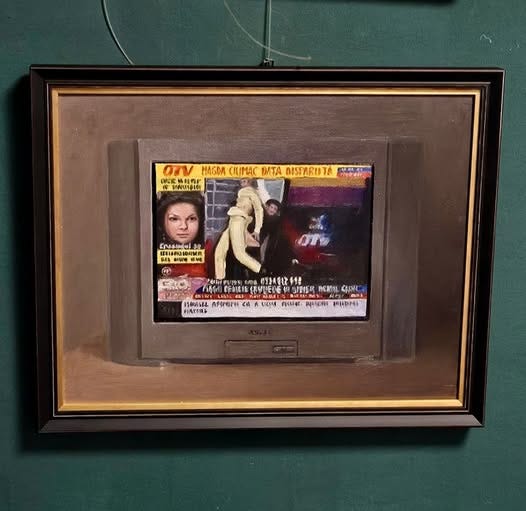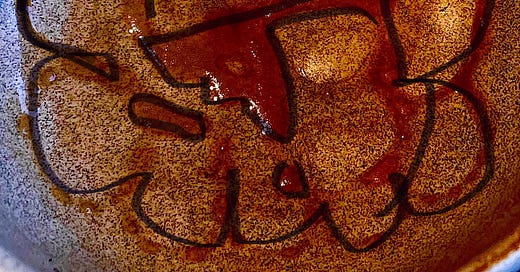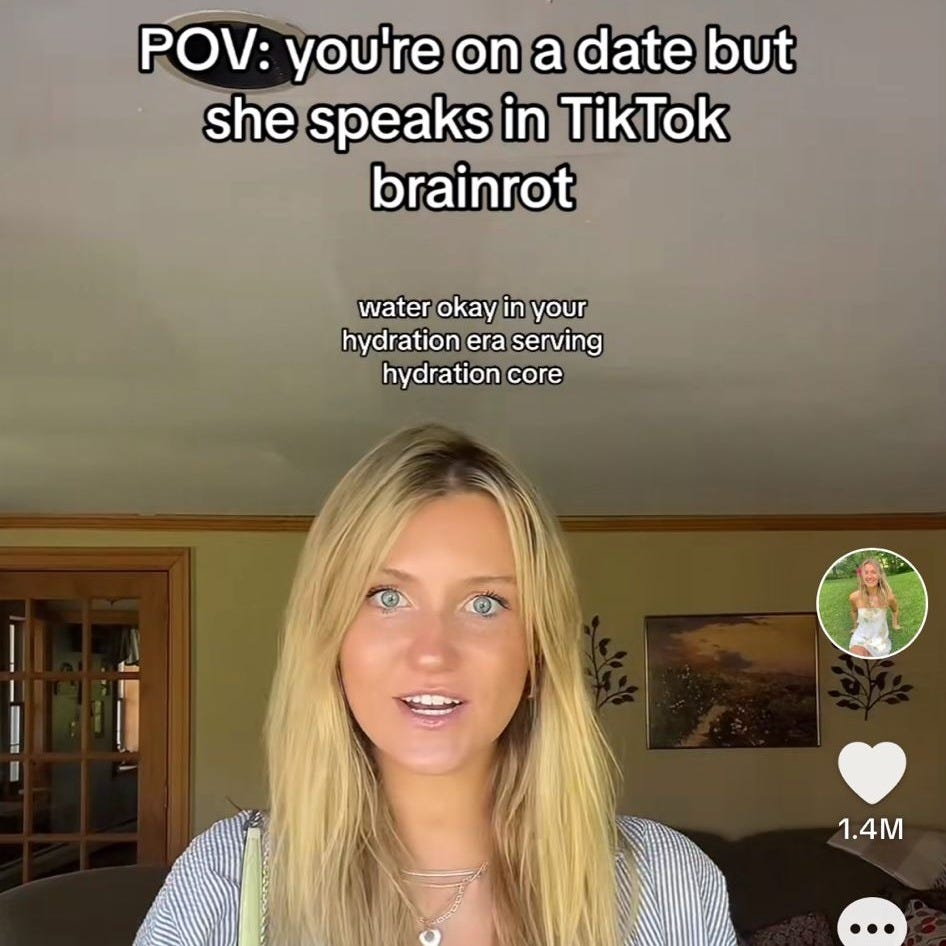Stirring the Digital Pot: Dissecting Content Creation, Algorithms, and the Future of Curators
About the last decade's content evolution and its influence on our behaviour
this is where it starts - from TV to social media
There are two things I love to freestyle—one is cooking and the second one is my essay-like rants. When it comes to my recipes, some become staples in my meal prep routine, while others end up either straight in the trash or causing mild food poisoning (apologies for that tuna pasta, girls).
The same could be said about my rants. Nevertheless, I hope to turn this space into a curated collection of reflections—drawing from nearly a decade of living abroad and over 20 years of working with media. My goal is to showcase new perspectives, use this as a catalyst for processing my experiences, or simply embrace the inherent human urge to share thoughts and opinions.
After a one-year hiatus from social media, I’ve decided to revive my presence—at least through writing. But why choose this path in an era of TikTok and Reels, where videos are consumed almost mindlessly, much like fast food or fast fashion?
Let me take you back more than ten years ago, to my hometown, where the TV was a constant presence in the background of our household. Every day, it started with the weather report, delivered by well-dressed presenters—mostly women, sometimes men—followed by the same hourly news, repeating itself endlessly, instilling fear in the general population (fear does keep viewers glued to the screen). Then came the shows that seemed to add no real value, turning the house into a soundscape of never-ending noise—a kind of phonic pollution radiating from the TV set.

If you were lucky enough to catch a rare movie, it would be interrupted every 10–15 minutes by ads. Day in, day out, the same voices, the same commercials, and the same old messages echoed just as they had a year before. It was around that time that I decided to stop watching TV altogether—after all, the internet offered all the news one could need, with a little less sensationalism and fewer distractions.
the algorithm trap
Boy, was I wrong in the long run. You were more or less fed news on Facebook, and had access to what were, at the time, obscure or independent news sources—has anyone else ever spiraled into the world of conspiracy theories on YouTube? The 2010s were quite an exciting time to be online.
Around that time, there was a boom in blogs and websites desperate to generate traffic with the most mind-rotting, clickbait titles imaginable. Of course, you couldn’t resist finding out which five vegetables would make you smarter or which habits to avoid if you didn’t want to age poorly. And discovering which Pokémon or Sailor Moon character you were—then sharing the results with your friends—felt like the pinnacle of self-discovery… ehm, I mean online quizzes.
By 2014, apps like Instagram, Vine, and Musical.ly (which later evolved into the TikTok we know today) were rapidly gaining popularity among younger teenagers, giving rise to an entirely new digital culture. These platforms opened doors for content creators and digital marketers, encouraging out-of-the-box thinking about content and what could be achieved with emerging technologies.
It has unequivocally shaped our society in a way we could never have anticipated in such a brief time. From teens who used the so-called “dancing app” to gained ginormous popularity and social presence, to people of all ages treating Instagram as a visual diary to keep up with friends, both platforms have grown into some of the most influential online mediums.
the dark side - cookies* are a given
*(not the edible ones)
Gone were the days, when you had to go down the rabbit hole to find interesting bloggers pertaining to your interest. Does anyone remember stumbleupon.com? Great website to… stumble upon intriguing little sites you never would’ve thought of googling - fantastic recipes were discovered during that time. Nowadays, we let the app algorithm do all the work. In exchange you are giving away your data and thus are prone to be on the receiving end of unsolicited ads. Remember: if you are not paying for the product, you are the product.
(Although honestly speaking, you can use it to your advantage. If you’re in the middle of researching a new hobby or topic, you just need to give the algo the right impulses and the right content will be delivered right to your doorstep.)
the emergence of doom-scrolling and echo chambers
The evil bit about this, however, is how these whole apps are designed to make you develop an addiction (a good starting point for reading on this is articles or interviews by Tristan Harris) They keep you consuming brain-rotting content, never letting you off the hook. After how many of the same sketches featuring different people, do you say “Enough”? How many times can the same joke be remixed? How many “these are the top five things you have to do in Paris” reels do you have to scroll past to be able to say, yes, I am not getting any new experiences or knowledge through this medium anymore. It’s time to stop, close the app, and go touch some grass.
there is even more to it
Also—I was lying. There is another dark side of the “enticing” algorithm that isn’t quite that often spoken about. And that is - the echo chambers. You all know how it goes, every debate has two sides. Have you ever wondered what happens if you constantly end up on only one side of the debate? Perceptions change and even IRL (in real life) behavior starts to shift. Almost as the results of the likes of a propaganda tool. Not only the content that is being delivered to you is one-sided, but the comments shown on the same videos or posts are the ones you’re most likely to agree with.
One could have argued that by using these apps, you have a kind of self-control over what you are seeing. Instagram posts used to be chronological, and after you finished catching up on every new post since your last visit, you could close the app. Or use the explore function in case you were looking for inspiration. Nowadays, you barely open the app and you’re bombarded with every possible hook that exists - “no, but why”, pouring a liquid in a mug, leaning in the camera to engage your followers in a closer parasocial relationship with you, or rather their online persona.
layers and layers
And then, the cherry on top. Here comes rage-bait content, but make it video, it is 2025 after all. Staged fights or conversations designated to stir up the viewer, provoke comments, and ensure engagement and even more views. Every trend or gag gets regurgitated a million times, commercialized until it’s no longer fun. It’s like that song you loved, but then it gets overplayed on the radio until you can’t stand hearing it anymore. (Please Social Media, don’t ruin Bad Bunny’s new album for me)
Sad, but it works. Recently, there’s been a noticeable rise in videos where the content or the punchline is long known, but we’re still drawn to the moving images and catchy background music, like flies to a buzzing lantern.
What could be the signs of aforementioned brain rot? Of course, a decreasing attention span is one obvious sign, but lack of creativity and drive are two other symptoms that catch my eye. Conversations lacking diversity, be it in vocabulary or topic, grabbing the phone and scrolling the moment one has nothing to do, and so on. Obviously, I am as well affected by the influence of the tech giants, and it’s all by design.
so what do we do now?
Despite some legal action being taken against the big players (META, TikTok - wait, is TikTok lowkey part of META now?), I doubt that these big tech giants will disappear entirely, but rather change form. There are too many people and businesses involved with them - dare I say, dependent on them - for this to be the fall of an era. What I can imagine is that the consumers will shift to a mix of platforms that feel of higher value - such as Substack wink, or even a revival of old-school blogs.
My prediction for the future of content is that curators—of music, books, spots, etc.—are going to be pushed more into the spotlight, whereas brands try to blend in with regular posts to gain reach “organically”. Alas, some curators are already there, but they will be undergoing a transformation, needing to hyper-curate pieces to stay relevant. It might not even be about niching down, but rather putting more effort and genuine interest in what they present. For example - Top three cafes where you can get your lockdown Dalgona Latte, but with really stiff foam - it almost feels like a long tail keyword, if you ask me.
how is that going to work?
As people got around more on the internet, numerous online tools have been made available for the public, and businesses such as travel agencies, or VHS rental services got redundant (thank you, Netflix 👀), a lot of people took matters into their own hands and began managing these type of services “in-house”. Today, you can easily book a flight to the other side of the earth, secure accommodations through an app in your native language, and even use your phone to navigate a foreign country, without breaking much of a sweat.
But as people get busier, the need to outsource their labour is increasing. We’re now faced with an incredible amount of online data, that we need to parse through, to weed out the planted ads, and the covert sponsorships, in order to get the quality information we strive for. Who has the time to check all the reviews for restaurants or cafes recommended in every video we see or blog we read? Or to even make a list and try to figure out which place could potentially just be a tourist trap? Such considerations require a dollop of media literacy, a topic we shall tackle another time.
A natural response to the above questions would be - well, ask ChatGPT. While I generally don’t condone the use of LLM (large language model) as an interim solution to the mountain of data that is hovering above us like an overwhelming digital cloud, as it does offer a shortcut to sifting through the noise, I personally like a human touch. Not to mention the environmental impact each query has on the planet, but I am aiming not to be preachy here.
That being said - I am sensing a renaissance of services such as travel agencies, albeit on a micro level. This trend can already be spotted on our lovely clock app, where creators make mood boards for travel destinations, evening plans, books or aesthetics based on the ✨ vibe ✨ and then link to their own pay-to-access blogs or newsletters. I have to confess, I indulge in this kind of content quite often, which has now left me with several unread subscriptions and newsletters. It is as if the cycle never ends. Will we then end up needing curator-curators? This is getting too Inception-y for my taste.
I am still new to the whole Substack deal - so if you want to keep an eye on my potpourri of musing regarding media, (pop) culture and tech, go ahead and click that subscribe button! Get it while it’s hot ;).
Thanks for reading A Recipe for Disaster! Subscribe for free to receive new posts and support my work.




